Related Research Articles
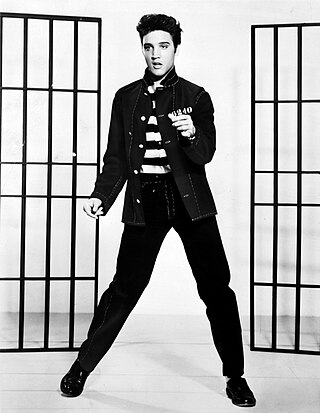
Elvis Aaron Presley, also known mononymously as Elvis, was an American singer and actor. Known as the "King of Rock and Roll", he is regarded as one of the most significant cultural figures of the 20th century. Presley's energized interpretations of songs and sexually provocative performance style, combined with a singularly potent mix of influences across color lines during a transformative era in race relations, brought both great success and initial controversy.
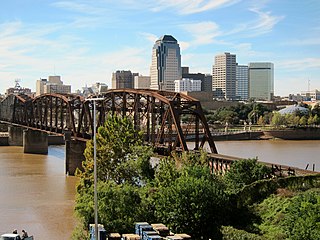
Shreveport is a city in the U.S. state of Louisiana. It is the third-most populous city in Louisiana after New Orleans and Baton Rouge. The bulk of Shreveport is in Caddo Parish, of which it is the parish seat. It extends along the west bank of the Red River into neighboring Bossier Parish. The 2020 census tabulation for the city's population was 187,593, while the Shreveport–Bossier City metropolitan area had a population of 393,406.

James Edward Burton is an American guitarist. A member of the Rock and Roll Hall of Fame since 2001, Burton has also been recognized by the Rockabilly Hall of Fame and the Musicians Hall of Fame and Museum. He was elected into the Country Music Hall of Fame in 2024. Critic Mark Deming writes that "Burton has a well-deserved reputation as one of the finest guitar pickers in either country or rock ... Burton is one of the best guitar players to ever touch a fretboard." He is ranked number 24 in Rolling Stone list of 250 greatest guitarists of all time.

James Travis Reeves was an American country and popular music singer and songwriter. With records charting from the 1950s to the 1980s, he became well known as a practitioner of the Nashville Sound. Known as "Gentleman Jim", his songs continued to chart for years after his death in a plane crash. He is a member of both the Country Music and Texas Country Music Halls of Fame.

Louisiana Hayride was a radio and later television country music show broadcast from the Shreveport Municipal Memorial Auditorium in Shreveport, Louisiana, that during its heyday from 1948 to 1960 helped to launch the careers of some of the greatest names in American country and western music. Created by KWKH station manager Henry Clay, the show is notable as a performance venue for a number of 1950s country musicians, as well as a nascent Elvis Presley.

Floyd Cramer was an American pianist who became famous for his use of melodic "whole-step" attacks. He was inducted into both the Country Music Hall of Fame and the Rock and Roll Hall of Fame. His signature playing style was a cornerstone of the pop-oriented "Nashville sound" of the 1950s and 1960s. Cramer's "slip-note" or "bent-note" style, in which a passing note slides almost instantly into or away from a chordal note, influenced a generation of pianists. His sound became popular to the degree that he stepped out of his role as a sideman and began touring as a solo act. In 1960, his piano instrumental solo, "Last Date" went to number two on the Billboard Hot 100 pop music chart and sold over one million copies. Its follow-up, "On the Rebound", topped the UK Singles Chart in 1961. As a studio musician, he became one of a cadre of elite players dubbed the Nashville A-Team and he performed on scores of hit records.
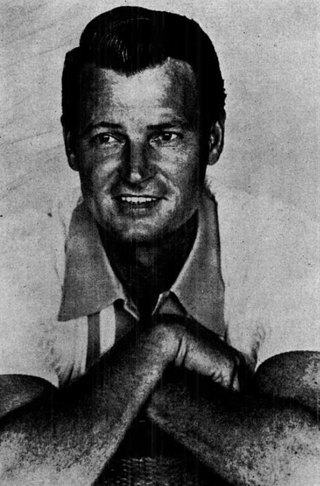
Claude King was an American country music singer and songwriter, best known for his 1962 million-selling hit, "Wolverton Mountain".
Tillman Ben Franks, Sr., was an American bassist and songwriter and the manager for a number of country music artists including Johnny Horton, David Houston, Webb Pierce, Claude King, and the Carlisles.
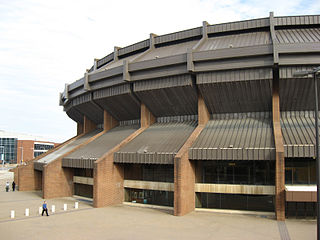
Richmond Coliseum is a defunct arena located in downtown Richmond, Virginia, with a capacity of 13,500 that was most often used for various large concerts. The arena opened in 1971 and the region is looking to replace the aging facility with a larger one. The arena was quietly shuttered in February 2019 while new proposed replacements are in development.

Hirsch Memorial Coliseum is 10,000-seat multi-purpose arena in Shreveport, Louisiana, designed by the late local architect Edward F. Neild Jr. (1908–1958) who, with his father in 1937, had designed the Louisiana State Exhibit Museum in Shreveport. The coliseum is named after William Rex Hirsch, a former fair president, manager and treasurer. The building completed construction in 1954, the year of Hirsch's death, and initially was planned to have the name The Youth Building. The coliseum has been used for a variety of events through the years, with dirt being brought in and placed on the floor for rodeos and tractor pulls. It is located adjacent to the Independence Stadium and across from Fair Park High School in Shreveport. Hirsch coliseum is very similar in design, though smaller in size to the John M. Parker Agricultural Coliseum, owned and operated by the Louisiana State University Campus in Baton Rouge. However, the Parker coliseum has a dirt floor arena and is mainly used for livestock-type events, with portable hard floors laid on top of the dirt for other types of events such as basketball games or concerts.

An encore is an additional performance given by performers at the conclusion of a show or concert, usually in response to extended applause from the audience. They are regarded as the most complimentary kind of applause for performers. Multiple encores are not uncommon, and they initially originated spontaneously, when audiences continued to applaud and demand additional performance from the artists after they had left the stage. However, in modern times they are rarely spontaneous and are usually a pre-planned part of the show.

Elvis In Concert is a posthumous 1977 television special starring Elvis Presley. It was Elvis' third and final TV special, following Elvis and Aloha From Hawaii. It was filmed during Presley's final tour in the cities of Omaha, Nebraska, on June 19, 1977, and Rapid City, South Dakota, on June 21, 1977. It was broadcast on CBS on October 3, 1977, two months after Presley's death. It was transmitted by the BBC in the United Kingdom on June 9, 1978. Unlike the majority of Elvis' programs, it is unlikely to be commercially released on home video and is only available in bootleg form. This is because it showed Elvis near the end of his life when he was overweight and addicted to prescription drugs, and much of his performance reflects his poor health. However, parts of the special were used in the video documentary Elvis: The Great Performances and the theatrical documentary This is Elvis, both of which were released on home video. Parts of the special were recreated for the movie Elvis, specifically Presley's performance of "Unchained Melody".
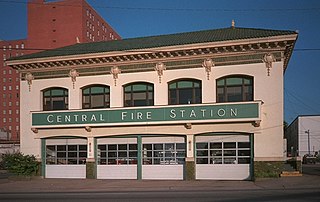
Shreve Town was originally contained within the boundaries of a section of land sold to the company by the indigenous Caddo Indians in the year of 1835, during the period of Indian Removal. In 1838, Caddo Parish was created from the large Natchitoches Parish and Shreve Town was designated as the parish seat. Shreveport remains the parish seat of Caddo Parish today. On March 20, 1839, the town was incorporated as "Shreveport".

KWKH is a sports radio station serving Shreveport, Louisiana. The 50-kilowatt station broadcasts at 1130 kHz. Formerly owned by Clear Channel Communications and Gap Central Broadcasting, it is now owned by Townsquare Media. Its studios are shared with its other five sister stations on Westport Avenue in West Shreveport, and the transmitter is a three-tower array in Belcher, Louisiana.
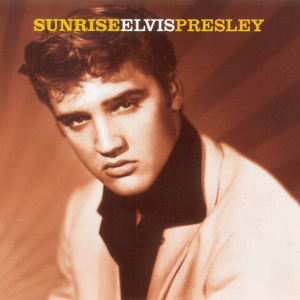
Sunrise is a two-disc compilation of Elvis Presley's studio recordings at Sun Studio from 1953 to 1955, released in 1999, RCA 67675-2. This set features all of the surviving master recordings made by Presley and his accompanists, Scotty Moore and Bill Black, occasionally augmented by other musicians, prior to his arrival on RCA Records in 1956.

Community Choice Credit Union Convention Center is a building located in downtown Des Moines, Iowa, that is part of the Iowa Events Center. Named to honor the World War II veterans of Polk County, it opened on February 1, 1955.
Jerry Glenn Kennedy is an American record producer, songwriter and guitar player.

Shreveport Municipal Memorial Auditorium is a historic performance and meeting venue at 705 Elvis Presley Boulevard in Shreveport, Louisiana. It is an Art Deco building constructed between 1926 and 1929 during the administration of Mayor Lee Emmett Thomas as a memorial to the servicemen of World War I. In 1991, the auditorium was listed on the National Register of Historic Places and on October 6, 2008, it was designated a National Historic Landmark.
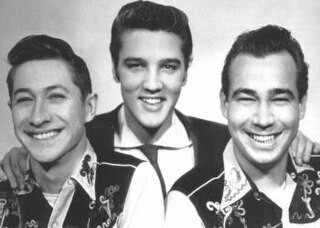
The Blue Moon Boys were an American rock and roll band that was formed by Elvis Presley, lead guitarist Scotty Moore and double bass player Bill Black. The group members were introduced by Sun Studio owner Sam Phillips in 1954, except for drummer D.J. Fontana, who joined the group during a Louisiana Hayride tour in 1955. The Blue Moon Boys were inducted into the Musicians Hall of Fame and Museum in 2007. The band was named after Bill Monroe's song "Blue Moon of Kentucky".
Horace Lee Logan, Jr., known as Hoss Logan, was the program director for the Louisiana Hayride in Shreveport, Louisiana, which showcased country music singing stars in the 1950s. He originated the catch-phrase "Elvis has left the building."
References
- ↑ Plasketes, George (July 18, 1997), Images of Elvis Presley in American culture, Psychology Press, ISBN 978-1-56024-910-8
- ↑ Logan, Horace, and Bill Sloan. 1998. Elvis, Hank, and me: making musical history on the Louisiana hayride, p. 181-183. New York: St. Martin's Press.
- ↑ "Elvis has left the building Origin – The Idioms". Archived from the original on February 7, 2019. Retrieved February 5, 2019.
- ↑ "Shreveport Municipal Auditorium". Archived from the original on February 21, 2014. Retrieved August 2, 2010.
- 1 2 The Elvis Encyclopedia. Gerald Duckworth & Co Ltd. 2008. p. 133. ISBN 978-0-7156-3816-3.
- ↑ "NYTimes blog mentions Mike Lange". Archived from the original on December 4, 2013. Retrieved February 19, 2012.
- ↑ "Flashback: How 1991 WWE Survivor Series Changed Wrestling". Rolling Stone. November 17, 2016. Archived from the original on August 12, 2018. Retrieved August 12, 2018.
- ↑ "Centimetre perfect: 23 classic Dennis Cometti AFL commentary lines". the Guardian. September 28, 2016. Archived from the original on September 29, 2021. Retrieved September 29, 2021.